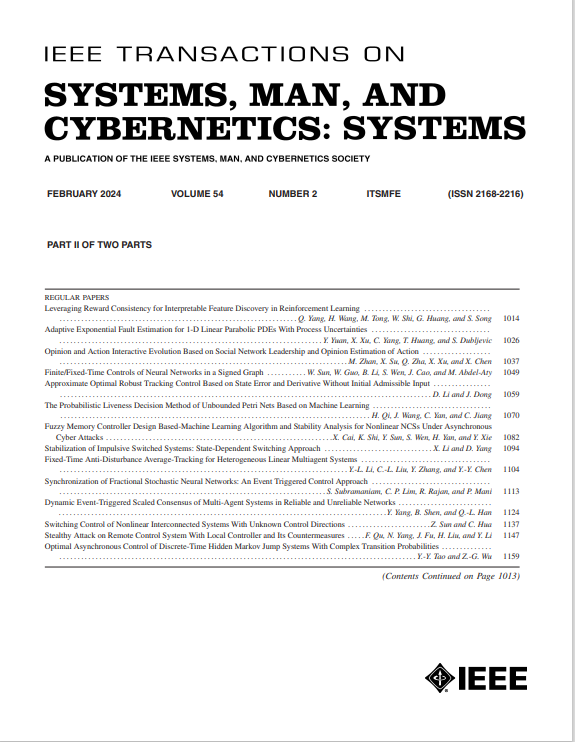锂电池交叉条件容量估计的多源特征分离与加权网络
IF 8.7
1区 计算机科学
Q1 AUTOMATION & CONTROL SYSTEMS
IEEE Transactions on Systems Man Cybernetics-Systems
Pub Date : 2025-07-24
DOI:10.1109/TSMC.2025.3585260
引用次数: 0
摘要
锂离子电池容量的准确预测是bms中的一项关键任务。然而,现有的多源域自适应方法往往忽略了每个源域的不同贡献,而仅仅关注于对齐源域和目标域的全局分布。这种限制可能导致负迁移。为了解决这一问题,本文提出了一种用于锂离子电池容量估计的多源特征分离和加权(MFSW)网络。首先,通过特征分离分离源域和目标域的私有特征和公共特征;采用对抗机制引导公共特征提取器学习域不变特征。然后,使用多阶度量进一步对齐特征。最后,引入了一种多源动态加权方法,自适应地调整各源域的权重。与其他多源域自适应方法相比,该方法在MIT数据集上的平均MSE和MAE分别降低了56.3%和28.8%,在XJTU数据集上的平均MSE和MAE分别降低了44.0%和38.6%。大量的实验结果表明,该方法有效地减轻了负迁移,具有良好的性能和鲁棒性。本文章由计算机程序翻译,如有差异,请以英文原文为准。
Multisource Feature Separation and Weighted Network for Cross-Conditional Capacity Estimation of Lithium Batteries
Accurate prediction of lithium-ion battery capacity is a critical task in BMSs. However, existing multisource domain adaptation methods often ignore the different contributions of each source domain, focusing solely on aligning the global distributions of source and target domains. This limitation can result in negative transfer. To address this issue, this article proposes a multisource feature separation and weighted (MFSW) network for lithium-ion battery capacity estimation. First, private and common features of both source and target domains are disentangled through feature separation. An adversarial mechanism is employed to guide the common feature extractor to learn domain-invariant features. Then, the features are further aligned using a multiorder metric. Finally, a multisource dynamic weighting method is introduced to adaptively adjust the weight of each source domain. Compared with other multisource domain adaptation methods, the proposed method reduces the average MSE and MAE by 56.3% and 28.8% on the MIT dataset, and by 44.0% and 38.6% on the XJTU dataset, respectively. Extensive experimental results demonstrate that the proposed method effectively mitigates negative transfer and exhibits superior performance and robustness.
求助全文
通过发布文献求助,成功后即可免费获取论文全文。
去求助
来源期刊

IEEE Transactions on Systems Man Cybernetics-Systems
AUTOMATION & CONTROL SYSTEMS-COMPUTER SCIENCE, CYBERNETICS
CiteScore
18.50
自引率
11.50%
发文量
812
审稿时长
6 months
期刊介绍:
The IEEE Transactions on Systems, Man, and Cybernetics: Systems encompasses the fields of systems engineering, covering issue formulation, analysis, and modeling throughout the systems engineering lifecycle phases. It addresses decision-making, issue interpretation, systems management, processes, and various methods such as optimization, modeling, and simulation in the development and deployment of large systems.
 求助内容:
求助内容: 应助结果提醒方式:
应助结果提醒方式:


